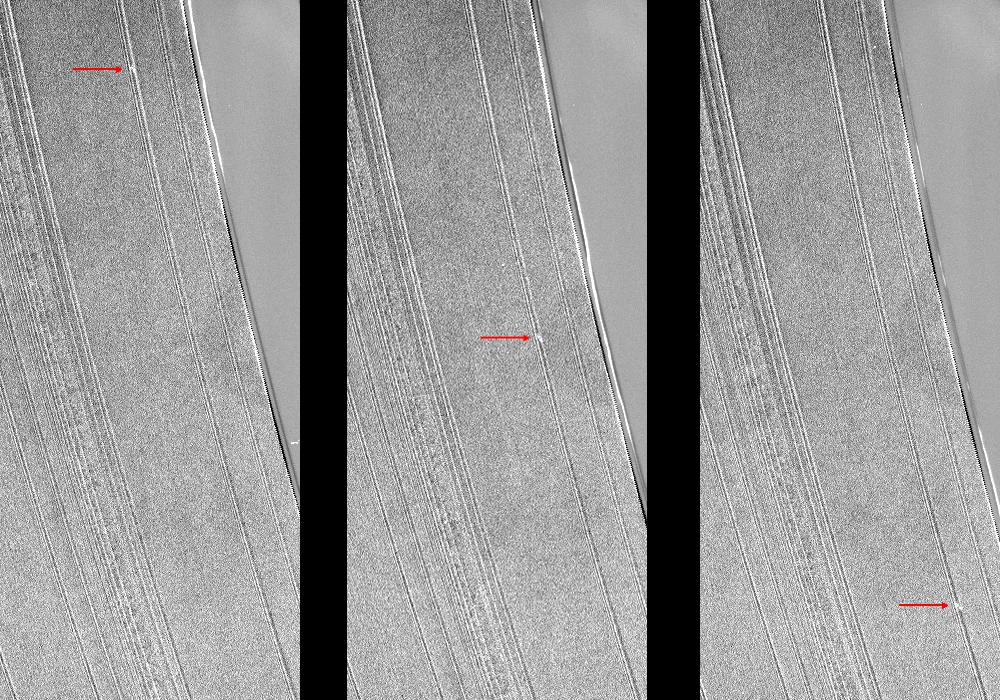Saturn's Rings Shine in Amazing Photos by Cassini Probe

The dazzling rings of Saturn are taking center stage in amazing new pictures snapped by NASA's Cassini spacecraft currently orbiting the planet.
The new Saturn ring photos come as the Cassini probe moves into a slightly different orbit around its gas giant target, officials with NASA's Jet Propulsion Laboratory in Pasadena, Calif., said in an image announcement.
"It's been nearly two years since NASA's Cassini spacecraft has had views like these of Saturn's glorious rings," JPL officials explained. "These views are possible again because Cassini has changed the angle at which it orbits Saturn and regularly passes above and below Saturn's equatorial plane."
The new view allows Cassini mission scientists to better study the shifting motions and intricacies of Saturn's rings, as well as the small moons that shape the rings.
With Cassini in the new orbit, the mission team has revived a project aimed at studying odd propeller-like shapes in Saturn's rings, JPL officials said. The propeller features appear as parts of the rings are swept clean by strange particles that are larger than the actual ring particles, but smaller than the known moons of Saturn, they added.
The Saturn ring propellers have not been seen in recent years because Cassini's orbit did not allow favorable views of the planet's rings. Since Cassini entered its new orbit, however, scientists have spotted propeller features that appear similar to ones observed in the past, NASA officials said.
The orbit change will also allow Cassini to observe Saturn's polar regions while gaining a new perspective on the planet's many moons.
Get the world’s most fascinating discoveries delivered straight to your inbox.
"We're entering a new episode in Cassini's exploratory voyage through the Saturn system," Carolyn Porco, imaging team lead, based at the Space Science Institute, Boulder, Colo., said in a statement. "These new ring results are an early harbinger of great things to come."
Cassini has been orbiting Saturn since it arrived in 2006. The spacecraft launched in 1997 is currently in an extended mission expected to last through 2017.
Views of Saturn are not limited only to Cassini's camera eyes. The planet is currently shining bright in Earth's late-evening night sky and can even be seen with the unaided eye, weather permitting.
Saturn and Mars are both visible in the western sky in late-evening. The two planets can be seen near the bright star Spica, weather permitting.
This story was provided by SPACE.com, a sister site to LiveScience. Follow SPACE.com on Twitter @Spacedotcom. We're also on Facebook and Google+.

Tariq is the editor-in-chief of Live Science's sister site Space.com. He joined the team in 2001 as a staff writer, and later editor, focusing on human spaceflight, exploration and space science. Before joining Space.com, Tariq was a staff reporter for The Los Angeles Times, covering education and city beats in La Habra, Fullerton and Huntington Beach. He is also an Eagle Scout (yes, he has the Space Exploration merit badge) and went to Space Camp four times. He has journalism degrees from the University of Southern California and New York University.




